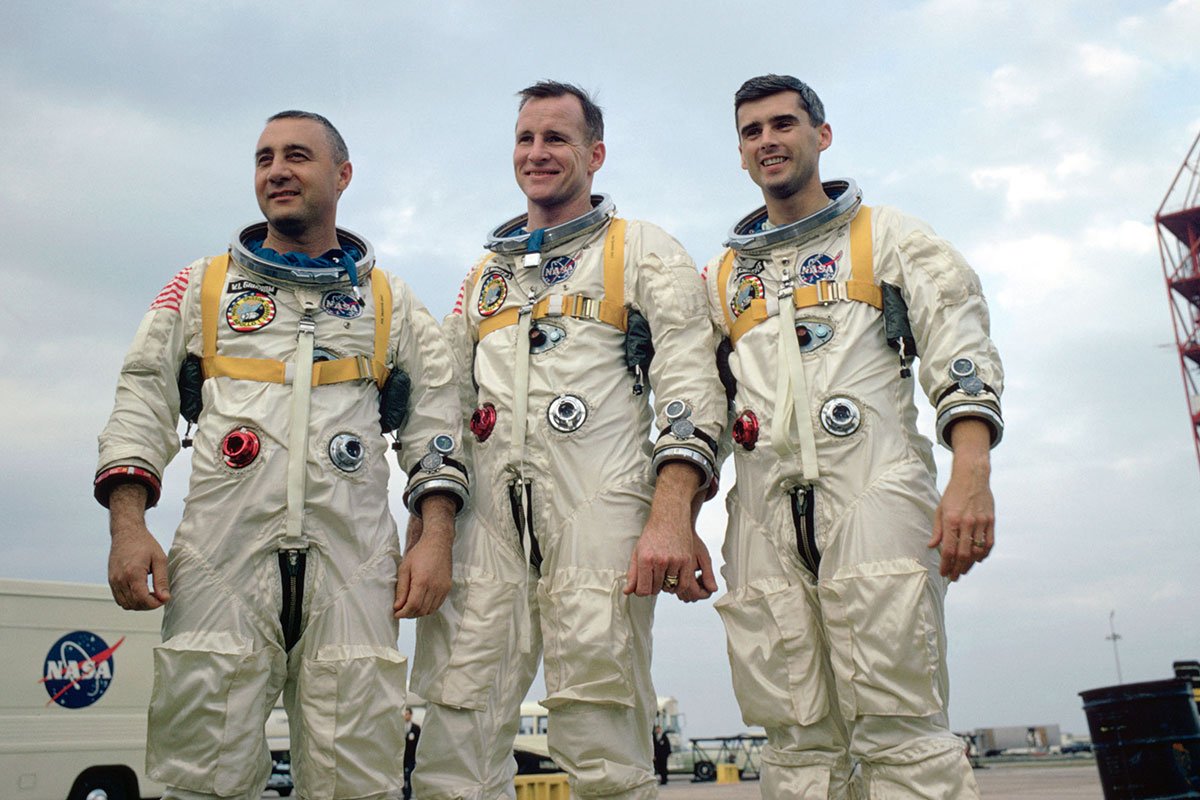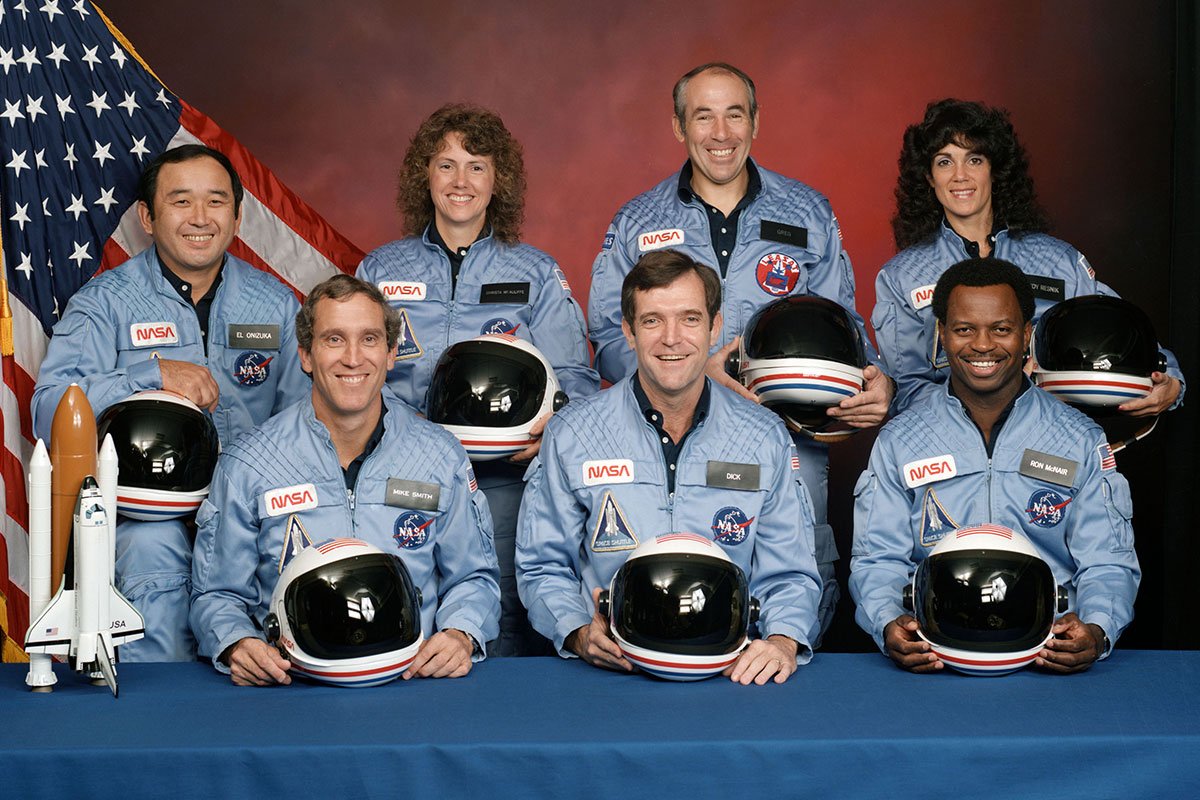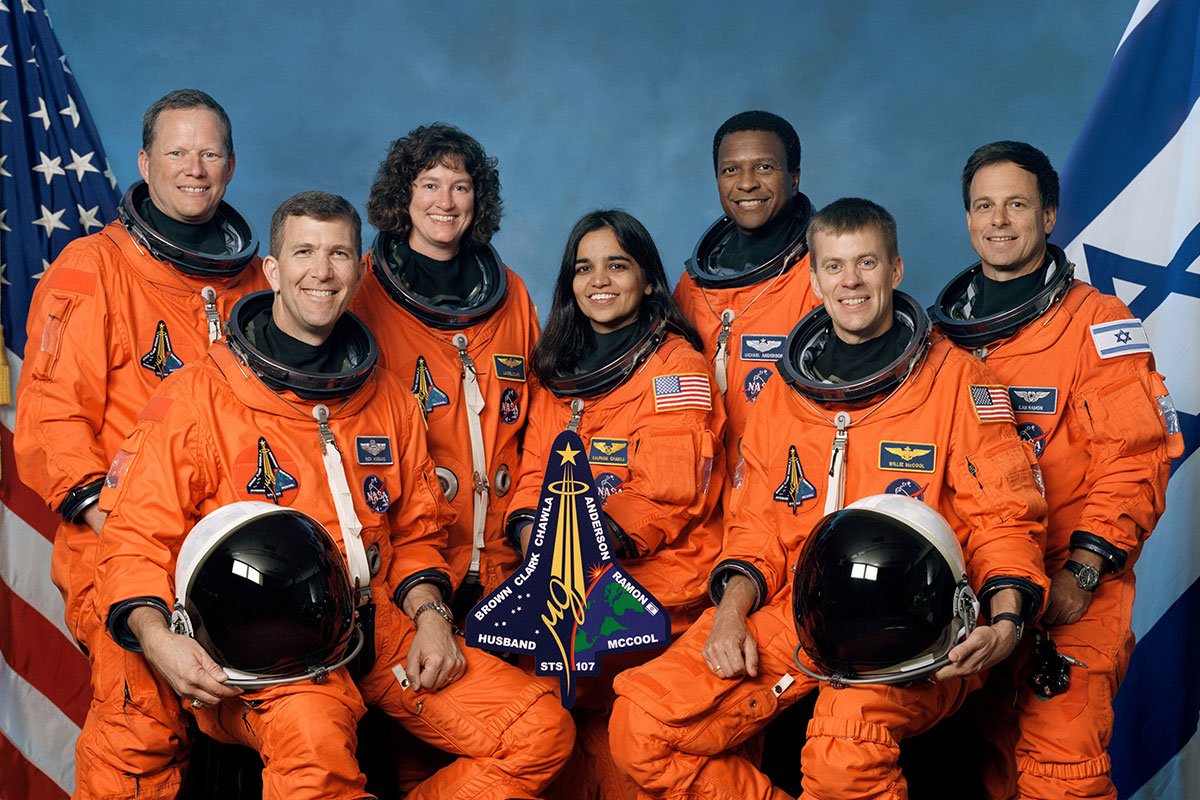Every year, NASA recognizes astronauts who lost their lives in the pursuit of spaceflight with an official Day of Remembrance. This year, it’s celebrated on February 7th.
Remembering Apollo 1
On Jan. 27, 1967, veteran space explorer Gus Grissom, first American spacewalker Ed White, and rookie Roger Chaffee were sitting on the platform for a pre-launch test when a flame broke out in their Apollo capsule.
The investigation into the fatal accident led to major design and engineering changes, making the Apollo spacecraft safer for the coming journeys to the moon

Apollo 1 Crew (l-r): Virgil I. Grissom, Edward H. White, Roger B. Chaffee , Image Credits : NASA
Remembering Challenger
On the morning of Jan. 28, 1986 Just 73 seconds after launch , a booster engine failed and caused the Shuttle Challenger to break apart, taking the lives of all seven crewmembers.
President Ronald Reagan eulogized the crew, quoting from the poem “High Flight”: “We will never forget them, nor the last time we saw them, this morning, as they prepared for the journey and waved goodbye and ‘slipped the surly bonds of earth’ to ‘touch the face of God.'”

Remembering Columbia
The seven-member crew of the STS-107 mission was just 16 minutes from landing on the morning of Feb. 1, 2003, when Mission Control lost contact with the shuttle Columbia. A piece of foam, falling from the external tank during launch, had opened a hole in one of the shuttle’s wings, leading to the breakup of the orbiter upon re-entry.
Among those who died was India’s pride Kalpana Chawla who is still considered a shining beacon of hope for all Indian girls and Ilan Ramon, the first Israeli astronaut.
Columbia, which had made the shuttle program’s first flight into space in 1981, lifted off for its 28th mission, STS-107, on Jan. 16, 2003. STS-107 was a flight dedicated to various experiments that required a microgravity environment. The crew comprised commander Rick Husband; pilot William McCool; mission specialists Michael Anderson, David Brown, Kalpana Chawla, and Laurel Clark; and payload specialist Ilan Ramon, the first Israeliastronaut. As Columbia was reenteringEarth’s atmosphere, it broke apart overTexas at approximately 9:00 am Eastern Standard Time at an altitude of 60 km (40 miles), showering debris across southeastern Texas and southern Louisiana. The disintegration of the craft was recorded by television cameras and U.S. Air Forceradar. Its major components and the remains of the crew were recovered over the following month.
Addressing the nation, President Bush said, “mankind is led into the darkness beyond our world by the inspiration of discovery and the longing to understand. Our journey into space will go on.”
You can read our recent post on Columbia Space Tragedy on this following link.

STS-107 Crew (l-r): Mission Specialist 1 David M. Brown, Commander Rick D. Husband, Mission Specialist 4 Laurel Blair Salton Clark, Mission Specialist 2 Kalpana Chawla, Payload Commander Michael P. Anderson, Pilot William C. McCool, Payload Specialist 1 Ilan Ramon, Image Credit: NASA